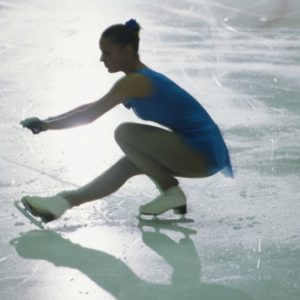Anorexia Especially Dangerous For Athletes
 Sports and aesthetic activities highly value a competitive spirit, perfection, and physical appearance. The qualities that drive someone to excel at athletics can also drive them into an eating disorder.
Sports and aesthetic activities highly value a competitive spirit, perfection, and physical appearance. The qualities that drive someone to excel at athletics can also drive them into an eating disorder.
Athletes’ lives and livelihoods revolve around the ability to perform at their peak. Many athletes are perfectionists, overachievers, competitive, compulsive, and aim to please. These traits, combined with an unhealthy preoccupation with bodily performance, can easily lead athletes to anorexia.
Contributing Factors
Athletic “Requirements”
The false ideal of thinness permeates many sports. “Appearance sports” such as gymnastics, ice skating, dancing, and cheerleading emphasize the importance of thin physiques. Athletes in these sports feel pressure to conform to the traditional prototype in their field. Additionally, many sports such as running, cycling, and skiing require low body weight for endurance purposes. Some sports require revealing attire (track and field, swimming, cheerleading, bodybuilding) which not all athletes may feel comfortable wearing.
Coaches’ Opinions
Coaches and athletes strive to keep their bodies performing at peak levels. This may require coaches to critique their athletes’ nutrition, diets, body fat, and exercise schedules. While this is natural for athletes, coaches don’t always approach the subject appropriately. Public weigh-ins and insensitive conversations cause insecurity and self-doubt. Teams may compete against each other to avoid the embarrassment of being called out by their coach. Teammates and coaches provide a significant influence in young peoples’ lives, so everyone must work hard to maintain a positive atmosphere in a competitive environment.
Judges and Competition
Sports are inherently competitive. Competitions and matches almost always consist of a winner and a loser. In the case of “appearance sports”, judges have an inherent bias toward thinner competitors. In other competitions, the fitter athlete usually comes out on top. Losing damages self-esteem and can create more stress in an athlete’s life.
Blending In
Anorexia Nervosa
Many times athletes with anorexia nervosa will go unnoticed for long periods of time. A thinner physique often does not stand out in the world of athletics, and anorexic behaviors may not seem as out of place. Athletes often do not eat before practices and competition, citing superstition, nerves, or gastrointestinal processes. They also avoid meals afterward in order to study, go to class, etc.
Athletes may also notice an increase in performance correlates with the initial loss of weight. This enhanced performance will not last as the athlete loses muscle mass and body fat.
Anorexia Athletica
Athletes with anorexia athletica can easily explain compulsive exercising by excusing it as extra training. A non-athlete with anorexia athletica is much more easily diagnosed by the drastic change in exercising behaviors. But athletes who already practice and compete at a higher level than the general population will blend in with their healthy peers.
Dangers of Anorexia in Athletes
Athletes must keep their bodies healthy in order to compete at a wide range of events. Anorexia inhibits their ability to function properly, resulting in decreased performance and ultimately, death. Here are some symptoms to watch out for:
- Amenorrhea
- Hypothermia
- Lanugo
- Stress fractures
- Dehydration
- Extreme weight loss
- Gastrointestinal problems
- Withdrawal from teammates
Source: Rader Programs and SportsMD.com
 Eating Disorder Self Test. Take the EAT-26 self test to see if you might have eating disorder symptoms that might require professional evaluation. All answers are confidential.
Eating Disorder Self Test. Take the EAT-26 self test to see if you might have eating disorder symptoms that might require professional evaluation. All answers are confidential.